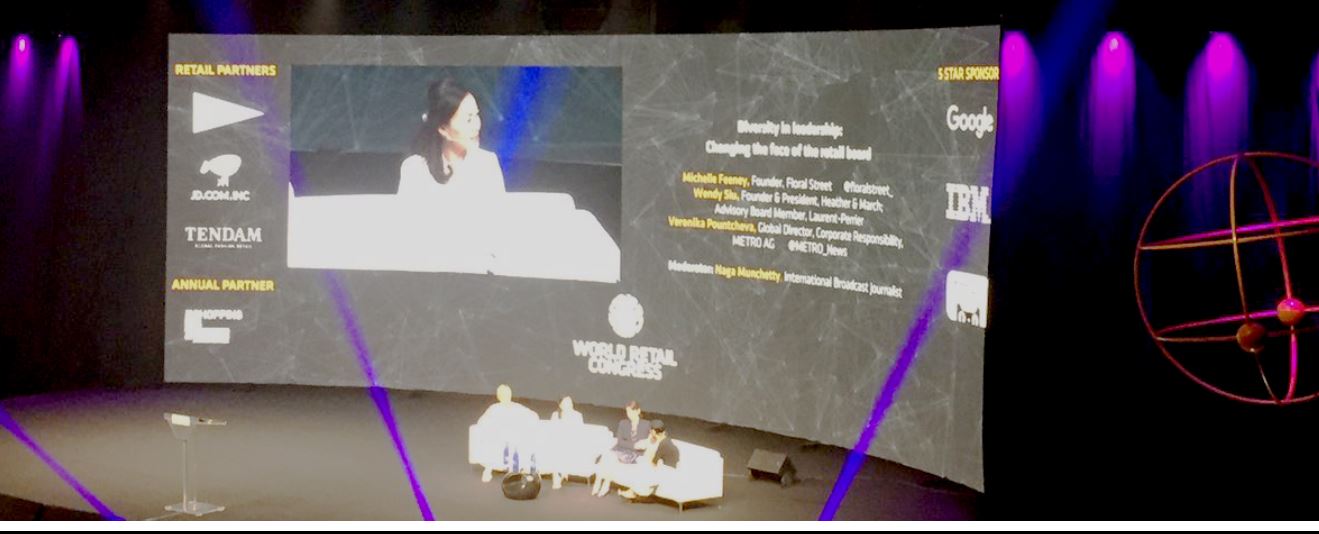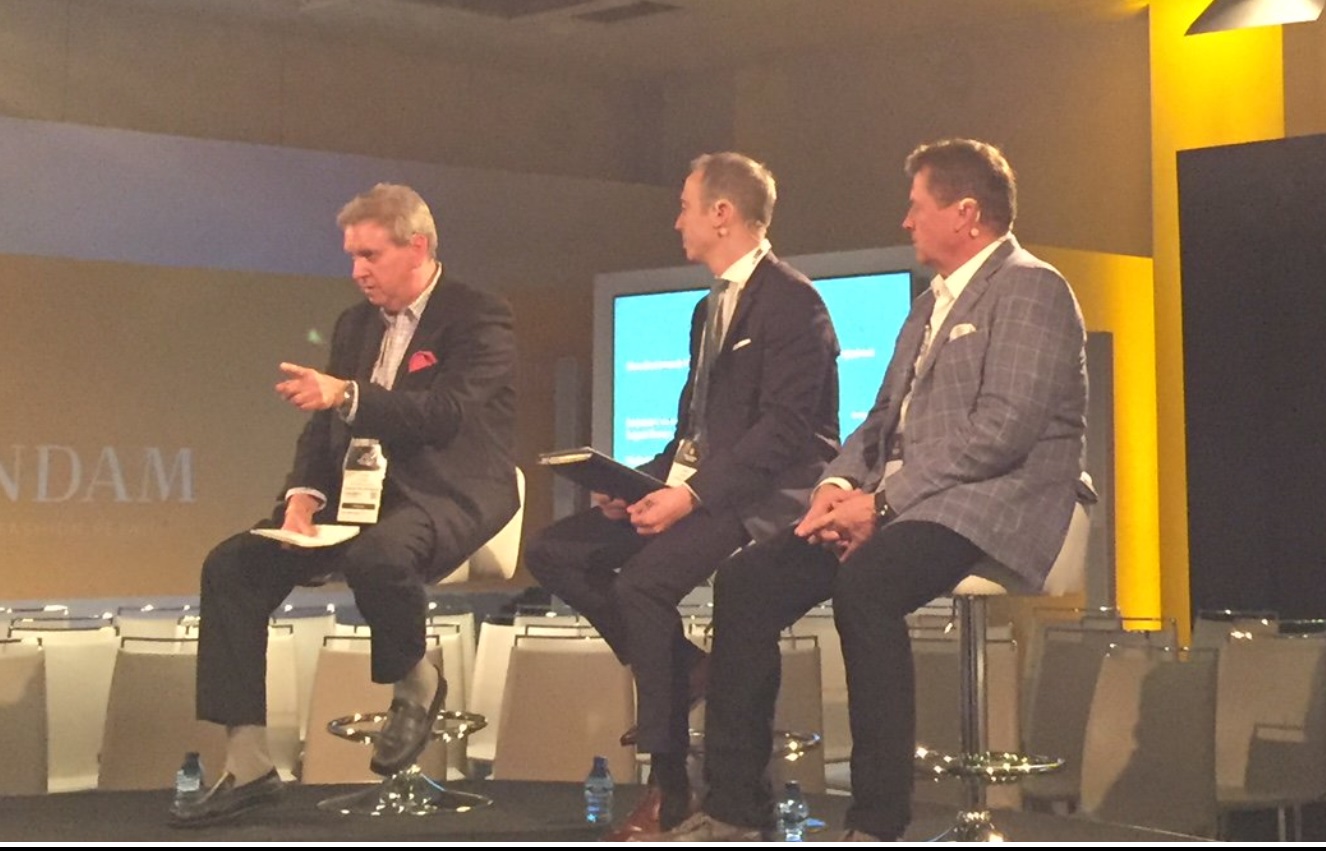
Web Developers
The Coresight Research team is attending World Retail Congress 2018 in Madrid this week. Here are our top takeaways from day two of the conference:
Iván Escudero Rial, Head of RFID at Inditex, discussed how his firm has implemented RFID technology to digitally track its products and, so, improve business operations and the customer experience. Rial noted that Inditex faces some challenges in managing its stock. The company has low volumes of each size of product in each store, but matching lean inventory with high profits can be tough. Meanwhile, the demands of store operations include managing inventories across sales and returns, fitting rooms and replenishments.
Inditex decided to deploy RFID technology within the security tags that are applied to products by suppliers (other options included embedding RFID tags in clothing labels or on price tags). The retailer developed a proprietary tag with security tagging firm Tyco. The RFID tags are encoded en masse in Inditex’s distribution centers, and are removed at the point of purchase, meaning they can be returned to suppliers and then attached to new garments.
Inditex’s stores track whether garments are in the stockroom or on the shop floor, and floor staff communicate with stockroom staff to check availability using WhatsApp. The technology enables Inditex to replenish stores faster and collect more information on shrinkage.
Rial summarized the in-store benefits of RFID as improving work for staff and providing better shopping experiences for customers.
Takeaways from a fireside chat with Véronique Laury, CEO of DIY retailer Kingfisher, include the following:
Reinventing Department Stores
On day two of World Retail Congress, we heard from two executives at premium-positioned department store retailers that have been overhauling their proposition in order to increase their relevance. Juan Carlos Escribano, CEO of Mexican department store chain El Palacio de Hierro, outlined his company’s strategy of curating stores for specific cities and communities. The company seeks to create distinct, quality stores under a model that contrasts with the conventional flagship-and-branch model most department stores use. El Palacio de Hierro’s regional stores have various themes—such as wellness, design and gastronomy, and the ocean—that align with their respective locations and the demands of local shoppers. The company’s Santa Fe store, for example, has a wellness theme and features a 17,500-square-meter gym plus complementary services such as organic food. Stacey Cartwright, Deputy Chairman of Harvey Nichols, said that her company does not consider itself a department store, but a large boutique. The difference is marked by heightened levels of personalized service, greater affinity for the retailer by customers and customers’ expectation that they will find a unique offering at Harvey Nichols. Four brand values underpinned Harvey Nichols’ physical and digital overhaul: being obsessed with style, playful in attitude, daring in delivery and devoted to the customer. The retailer’s physical transformation included adopting new store formats that abandoned traditional department store walkways in favor of allowing shoppers to find their own path through the store. The company also incorporated modern and industrial materials along with traditional materials in stores. Harvey Nichols’ newer digital tools include its Rewards app, which has driven strong engagement by offering shoppers high-value experiences as incentives. Recently, it has also made in-store stylists available through mobile devices, including through livestreamed video that shoppers can watch.Diversity Under Discussion
Boardroom diversity, and particularly gender diversity, was the subject of a panel discussion on the morning of day two at World Retail Congress.- Veronika Pountcheva, Global Director of Corporate Responsibility at Metro Group, noted that investors are increasingly questioning firms about the diversity of their workforces. In discussing gender quotas for company boards, Pountcheva gave an analogy to golf: in golf, if you want to improve your handicap, you practice, and quotas give firms a chance to undertake practice—to look outside the company when hiring, review their recruitment practices and look at how diversity is recognized in their daily work.
- Wendy Siu, Founder and President of home interiors firm Heather & March, argued that to recruit women to boards, firms have to ensure that they have enough women in middle and senior management. In Asia, Siu said, it is difficult for firms to find the right women for board memberships not because of discrimination, but because traditional Asian values keep many women from seeking such choices.
- Siu recognized that, without quotas, progress on gender representation may be slow, but she suggested that quotas should be adjusted in consideration of local factors and that they could cause friction in some countries.
 Source: Coresight Resarch
Digitalizing Products
Source: Coresight Resarch
Digitalizing Products
Iván Escudero Rial, Head of RFID at Inditex, discussed how his firm has implemented RFID technology to digitally track its products and, so, improve business operations and the customer experience. Rial noted that Inditex faces some challenges in managing its stock. The company has low volumes of each size of product in each store, but matching lean inventory with high profits can be tough. Meanwhile, the demands of store operations include managing inventories across sales and returns, fitting rooms and replenishments.
Inditex decided to deploy RFID technology within the security tags that are applied to products by suppliers (other options included embedding RFID tags in clothing labels or on price tags). The retailer developed a proprietary tag with security tagging firm Tyco. The RFID tags are encoded en masse in Inditex’s distribution centers, and are removed at the point of purchase, meaning they can be returned to suppliers and then attached to new garments.
Inditex’s stores track whether garments are in the stockroom or on the shop floor, and floor staff communicate with stockroom staff to check availability using WhatsApp. The technology enables Inditex to replenish stores faster and collect more information on shrinkage.
Rial summarized the in-store benefits of RFID as improving work for staff and providing better shopping experiences for customers.
Cheap Tech
Tech can be “cheap as hell,” argued Eugene Roman, EVP of Digital Excellence at Canadian Tire, citing bots that can be developed for as little as $15,000. Retail is a slim-margin, nonrecurring-business sector, and retailers should build machines to help with it, he said. Those investments can be “peanuts” compared with the return they provide, Roman said, noting that retailers should ask themselves, “Can we do this cost effectively?” A number of years ago, Canadian Tire decided algorithmic retail was the future. Now, the firm uses more than 200 active bots to help run the company. It claims one of the best pattern analysis teams in Canada and employs a cognitive science team. Source: Coresight Resarch
DIY Goes Digital
Source: Coresight Resarch
DIY Goes Digital
Takeaways from a fireside chat with Véronique Laury, CEO of DIY retailer Kingfisher, include the following:
- Many retailers have underestimated the cost of digital operations. They have to make realistic choices, and retailers such as Kingfisher probably will not have the same number of employees in coming years.
- One myth about home improvement was that the category would never go online. This is absolutely not true, Laury said, noting that Kingfisher’s Screwfix banner sees 28% of its sales generated online.
- Amazon spurs every other retailer to go a little faster and is effectively showing the way to the rest of retail.
- Retailers must do more than just sell, Laury said, pointing to Zara and Decathlon as stores that successfully “retail the offer” rather than simply sell product.